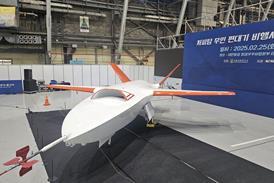THE WORLD'S LARGEST and most profitable airlines are facing an all-time-great dilemma as the Farnborough Air Show approaches. Should they bow to Boeing's pressure and sign now for its new stretched 747-500/ 600, or should they await the Airbus A3XX?
If they buy the Boeing now, they may guarantee themselves a marketing advantage over others. If they wait for the A3XX, they would get something bigger and probably more cost-effective - but with no guarantee of if it would happen. It is a multi-billion-dollar gamble based on jam tomorrow.
If they are prepared to wait for the A3XX, they face huge uncertainties. Just how will the new Airbus find a niche, if Boeing already has placed its similarly sized 747-600 with most major operators? Will the A3XX really deliver much better ownership costs through being a technical generation ahead of the Boeing product - even one which is the first of the 747 family to have fly-by-wire technology? (That, of course, is the big driver behind Boeing's wish to launch now: launching head-on against Airbus would entail Boeing making far more radical changes than those so far envisaged for the 747-500/600.) If they wait for the A3XX, how much competitive advantage have they lost to the airlines, which have plumped for the quicker delivery of the technically less-challenging stretched Boeings?
All this presupposes that there are enough airlines now willing to sign up for the 747-500/600, or would be willing to sign up for an A3XX in perhaps two years (or, indeed, that there will ever be a big-enough market for both of them). Current talk places the price in 2001 dollars for a stretched 747-600 at $230 million: Airbus must match or beat that to stay in contention.
The high prices being mentioned, reflect the fact that a manufacturer might have to plan to recover its investment of $8 billion, or more (as Airbus has suggested) over a production run of perhaps only 200 aircraft a decade. That suggests recovering, after the costs of building the aircraft, perhaps another $40 million per aircraft (roughly the price of a 737) to recoup the investment. Where that investment will come from is a moot point - particularly for Airbus. Some of it will come from the companies themselves or through their own borrowings, which is where Boeing so far has an advantage over Airbus in being a corporate entity which can raise funds on the world's capital markets. Airbus must wait to become a single company before it can get access to funds other than through cash flow. Some funding for the Airbus project would come from Government launch-aid and loans, but both manufacturers would also be looking for significant new partnership funding from elsewhere.
Received wisdom says that that should come from Asia, from where will also come much of the demand for these very large aircraft - but from which bit of Asia? Not, it would seem, from China, whose ambitious aviation industry sees other, less-expensive, opportunities of greater immediate benefit and relevance to its own needs. The Korean industry has already fallen out with China over its desire to be a significant assembler, not a risk-sharing supplier, on the much smaller AE-100 regional-jet programme.
Japanese industry has shown more willingness to invest in long-term projects like this, it having taken sizeable stakes in the 767 and 777 programmes. The Japanese are widely tipped to be seeking a greater involvement in the new 747s, probably to the cost of present US subcontractors. Jobs and technology at home for investment abroad is a potent incentive for Japan's continued presence in the Boeing camp. All of that leaves Airbus casting around for potentially less capable partners - unless it can bring in a major US partner, even McDonnell Douglas.
In the end, who introduces a 500+-seater, and when, is going to be not so much a question of who offers the most jam tomorrow, but who has the bread today.
Source: Flight International























